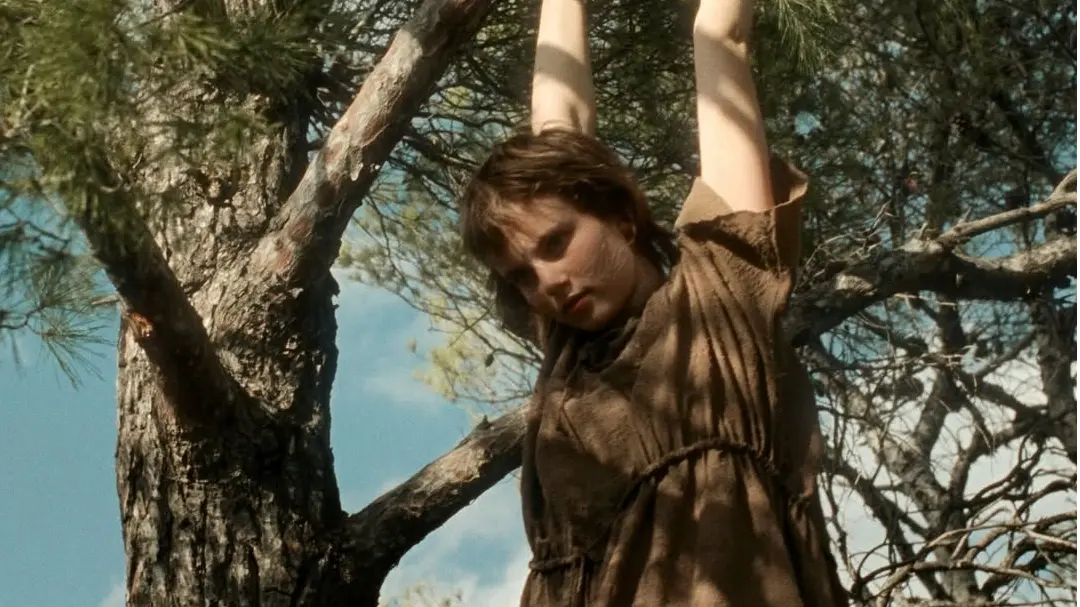The Carpenter's Son ending explained: Did the Boy kill the Stranger?
-
 Isla Johnston in The Carpenter's Son (via Instagram/@magnoliapics)
Isla Johnston in The Carpenter's Son (via Instagram/@magnoliapics)The Carpenter's Son is a 2025 biblical horror film directed by Lotfy Nathan. It reimagines the teenage years of Jesus Christ, depicted as "The Boy," a figure grappling with emerging divine powers amid fear and isolation. It premiered in theatres on November 14, 2025, in the US.
The plot follows The Boy, portrayed by Noah Jupe, living in secret in Nazareth with his adoptive parents. Roman soldiers and wary villagers threaten the family after his early miracles surface. Nicolas Cage plays The Carpenter, a devout father torn between faith and doubt. FKA Twigs stars as The Mother, a guardian haunted by visions. Isla Johnston and Souheila Yacoub add depth to the village's growing unrest.
Inspired by the second-century Infancy Gospel of Thomas, which depicts young Jesus in both kind and vengeful acts, the film darkens this lore. The Boy navigates his life from a confused teenager to a messiah filled with compassion and forgiveness.
In the climax, we see that The Boy did not kill The Stranger, who is later revealed as Satan in disguise. This act of mercy redefines the Boy's journey toward salvation. The intentional ambiguity regarding the gender of the Stranger serves as a key thematic element in the film's exploration of temptation and identity as played by Scottish actress Isla Johnston.
The Carpenter's Son ending explained: The Boy spares Satan
The Stranger first appears during the family's desperate flight from a Roman patrol. Disguised as a scarred refugee girl, she approaches The Boy with feigned sympathy, sharing tales of her own losses to gain his trust. Her true intent unfolds gradually. She gives him a crudely carved wooden snake, which later comes alive in his nightmares, slithering over his skin and whispering doubts about his father's strict doctrines.
As their connection grows, the Stranger encourages The Boy to use his gifts without restraint. In a secret meeting by a dried riverbed, she dares him to touch a dying bird, and he restores its life, thrilling him in contrast to the Carpenter's warnings to hide his abilities for safety.
However, her influence leads to chaos. The Boy's powers erupt uncontrollably: a prayer to heal a neighbour's fever starts a fire that scars the home. In a village fight, he will harm a bullying teen, who dies instantly before witnesses.
The Carpenter reacts with intense rituals, fasting for days and carving protective symbols into doorframes with ash while chanting ancient incantations to repel shadows. Demonic attacks escalate: black serpents possess villagers, forcing Aramaic curses from their mouths, while ghostly figures disrupt the workshop with poltergeist activity.
The Mother brews herbal protections and urges patience based on her visions, but the family fractures as The Boy isolates himself, plagued by visions of a crucified future.
The Stranger's disguise shatters in a hidden cave under moonlight, her eyes glowing with infernal hunger. She reveals herself as the fallen one, the Satan exiled for defying divine order. In a key monologue, she proposes an alliance of outcast saviours who reject submission. "Why heal the unworthy when you could rule them?" she urges, showing visions of empires built on fear.
The Boy, haunted by his fatal mistake, wavers. His powers spiral further: exorcising a demon from a child leaves the host comatose and an angry storm floods fields, killing livestock.
Paranoia sweeps Nazareth. Whispers of a cursed child spark armed hunts, trapping the family. The Carpenter's faith falters, culminating in a confrontation where he demands The Boy deny his "demonic spark."
The Stranger's temptations isolate him in ethical turmoil. Snakes proliferate in his dreams, forming nooses hinting at future thorns. The village nears ruin, with idols falling at his accidental prayers and skies darkening like an eclipse.
The climax occurs in a storm-torn ravine, where the Stranger draws The Boy for a final play. The fight turns physical: she slashes with talons, drawing divine blood, and provokes him to kill.
Rage and fear drive The Boy to unleash his power. Villagers huddle as earthquakes topple stalls and spark fires. Victory hangs briefly; he could destroy her, fulfilling her prophecy of vengeful godhood.
But The Boy hesitates as memories surge of the bully's empty eyes, the Carpenter's fatigue, his mother's quiet appeals. He spares The Stranger, banished by mercy rather than death.
It recasts biblical mercy as a choice in chaos, questioning if power is in restraint. The 116-minute film builds to this turn, portraying a developing messiah whose road to Calvary bears personal devastation.
The Carpenter's Son is in theatres now. Streaming availability is anticipated for early 2026.
Stay tuned for more such updates!